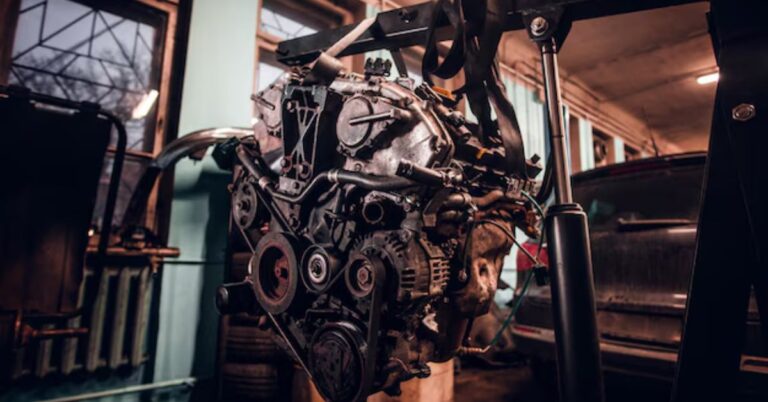n scale indrarec sensor: A Comprehensive Overview
The n scale indrarec sensor is an advanced component used in model railroading, particularly within the context of automation, detection, and control systems. The integration of such sensors into model train layouts has transformed the way enthusiasts design and interact with their miniature worlds. Understanding the n scale indrarec sensor’s functions, benefits, applications, and integration methods can significantly enhance a hobbyist’s experience.
What is an n scale indrarec sensor?
The n scale indrarec sensor is a small but highly efficient optical sensor designed for use in model train setups. As “N scale” refers to a specific size ratio (1:160), the sensor is engineered to operate within this miniature scale, ensuring it doesn’t disrupt the aesthetic or functional qualities of the layout. n scale indrarec sensor are typically used to detect changes in light, movement, or presence within the train system. These sensors play a critical role in automating and improving the performance of model railroads.
The sensor utilizes infrared (IR) technology, emitting light beams and detecting their reflection or interruption. When a train passes over or near the sensor, it activates or deactivates the system, triggering specific actions such as turning on lights, controlling signals, or switching tracks. The sensor’s compact size and precise capabilities make it an ideal choice for N scale model trains, which demand miniature yet effective components.
The Role of n scale indrarec sensor in Model Railroading
Model railroading has always been a hobby that thrives on realism and complexity. Enthusiasts often spend hours creating intricate landscapes, stations, and tracks that mimic real-world train operations. However, with the growth of technology, automation has become an essential element in creating a more immersive experience. The n scale indrarec sensor plays a pivotal role in achieving this goal.
One of the primary functions of the n scale indrarec sensor is its ability to automate train operations. It can be used to detect the presence of trains or rolling stock, enabling the automation of various components such as signaling systems, track switching, and even the operation of accessories like lights, gates, or sound effects. The sensor is also useful in creating realistic scenarios where a train might automatically stop at a station, wait for a signal, or activate lights when it enters a tunnel or a particular area of the layout.
Another significant benefit is the ability to create dynamic and interactive environments. By integrating these sensors into a model layout, users can simulate the functions of real-world railroads, where trains respond to signals, change tracks automatically, or adjust speeds based on system inputs. In turn, this leads to a more engaging experience for both operators and viewers of the model railroad.
Key Features of the n scale indrarec sensor
The n scale indrarec sensor is equipped with several features that make it well-suited for the demanding nature of N scale model railroading. These features ensure it can be seamlessly integrated into the complex ecosystems of model train layouts without compromising functionality or realism.
One of the most important features of the n scale indrarec sensor is its size. At a 1:160 scale, the sensor is compact and unobtrusive, ensuring it fits within the tight constraints of N scale layouts. Despite its small size, the sensor delivers powerful performance and can detect minute changes in light or motion. This makes it suitable for use in a wide range of applications, from detecting the arrival of a train at a station to triggering actions like signals, crossing gates, or lights when trains pass through specific zones.
Another notable feature is the sensor’s sensitivity and precision. n scale indrarec sensor are designed to detect even slight disruptions in the light pattern, ensuring that they respond quickly and accurately to moving trains. This high level of sensitivity is vital for maintaining smooth operations in automated systems, where any lag or error in detection can cause disruptions in the overall functioning of the layout.
Additionally, the sensor is designed for ease of installation and use. The n scale indrarec sensor is compatible with a wide range of model train controllers, including Digital Command Control (DCC) systems, which are commonly used for advanced model railroad automation. This compatibility ensures that hobbyists can easily integrate the sensor into their existing setups without the need for extensive modifications or technical expertise.
Applications of the N Scale Indrarec Sensor
The versatility of the N scale Indrarec sensor makes it applicable to various aspects of model railroading. One of its most common applications is in track detection. In this role, the sensor can be used to monitor the position of trains on the layout. When a train passes over or near the sensor, the sensor can trigger corresponding actions, such as activating or deactivating signals, changing the direction of a switch, or triggering special effects like lights or sound.
Another significant application of the Indrarec sensor is in signaling and traffic control. In real-world railroads, signals are used to control the movement of trains, indicating when it is safe for a train to proceed, stop, or slow down. By incorporating the N scale Indrarec sensor into a model railroad layout, hobbyists can replicate this process. For example, a train could automatically stop at a signal when it detects the presence of another train on the track ahead, much like how real-world railroads use signaling systems to ensure safety and efficient operations.
The Indrarec sensor is also instrumental in enhancing the realism of a model railroad layout. It can be used to trigger lights, gates, or other accessories when a train enters a particular zone or station. For instance, a level crossing gate could automatically lower when a train is detected, or lights could turn on in a building when a train approaches. These small but impactful details help bring a model layout to life, creating a more immersive and engaging experience for operators and viewers alike.
Integration with Digital Command Control (DCC) Systems
In the world of model railroading, Digital Command Control (DCC) systems have become increasingly popular for controlling trains and accessories. These systems allow hobbyists to control multiple trains on a single track, adjust train speeds, and operate various accessories, all through a single interface. The n scale indrarec sensor is fully compatible with DCC systems, making it an ideal choice for those looking to automate their layouts with precision.
By integrating the sensor with a DCC system, hobbyists can achieve greater control over their layouts. For instance, when the Indrarec sensor detects a train, it can communicate with the DCC controller to activate or deactivate switches, signals, or other accessories. This level of integration provides a more streamlined and efficient experience, eliminating the need for manual intervention in certain aspects of train operation.
Furthermore, DCC systems allow for programming of specific responses based on sensor inputs. This means that users can customize how their n scale indrarec sensor behave in different scenarios. For example, the sensor could be programmed to trigger a specific action only when a certain number of trains are detected, or to change the behavior of signals depending on the time of day or the layout’s operational needs. This level of flexibility and control allows for a more dynamic and interactive model railroad experience.
The Future of N Scale Indrarec Sensors
As technology continues to advance, the capabilities of N scale Indrarec sensors are likely to expand, offering even greater functionality and integration with other systems. Future developments may include improved detection technologies, allowing the sensors to detect a wider range of variables, such as temperature, humidity, or even the speed of approaching trains. Additionally, sensors may become even more compact, making them easier to integrate into even the most intricate layouts without compromising the overall design.
Another exciting possibility is the continued development of wireless sensors and control systems. Wireless technology would allow for easier installation and more flexible layouts, as hobbyists could place sensors anywhere on their layout without worrying about complex wiring. This would also simplify the integration of multiple sensors and create more dynamic, interactive environments where multiple components can be controlled and automated simultaneously.
Moreover, the potential for integrating Indrarec sensors with artificial intelligence (AI) and machine learning (ML) algorithms is also on the horizon. These technologies could enable sensors to “learn” how to respond to specific situations based on patterns or behaviors, further enhancing the realism and complexity of model railroad operations.
Conclusion
The n scale indrarec sensor is a vital component in the world of model railroading, offering enthusiasts a powerful tool to automate and enhance their layouts. Its ability to detect light, motion, and presence with high precision enables the creation of more realistic and dynamic environments. Whether used for track detection, signaling, or activating accessories, the Indrarec sensor helps hobbyists achieve a higher level of realism and interactivity in their model train systems.
As the world of model railroading continues to embrace new technologies, the n scale indrarec sensor will remain a key player in the development of more sophisticated, automated, and engaging layouts. With its compatibility with DCC systems, ease of installation, and future potential for growth, the sensor will undoubtedly play a central role in the evolution of model railroading for years to come.







